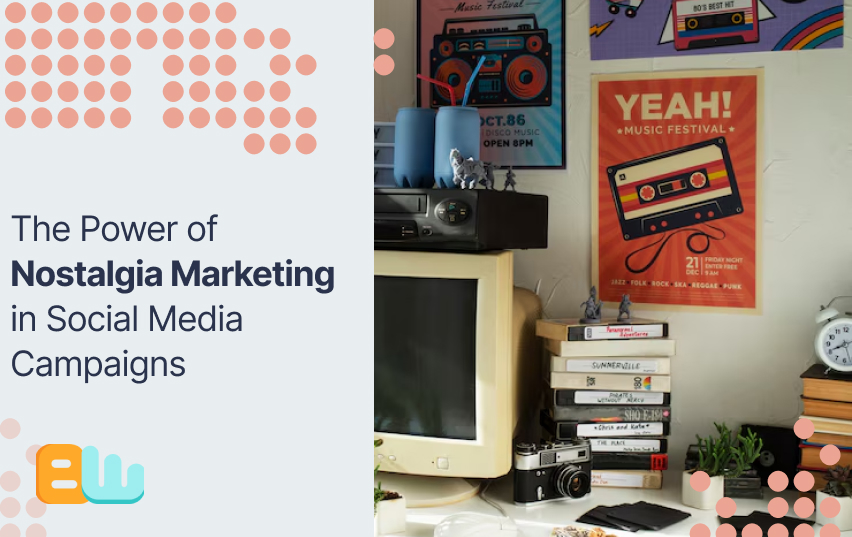
Do you recall the moment your childhood favorite toy returned to the market? That emotional experience was the result of nostalgia marketing. These days, businesses use social media to connect with consumers and bring back powerful feelings that traditional advertising simply cannot.
As digital feeds become more crowded, nostalgia can help you directly connect with the emotions of your audience. Instead of only scrolling through content, you should create content that brings back positive memories, increases follower engagement, and turns potential customers into loyal ones .
With practical strategies that encourage deep involvement and develop deep ties with your audience, you’ll discover how to use nostalgia marketing in your social media campaigns.
Understanding Nostalgia Marketing in the Digital Age
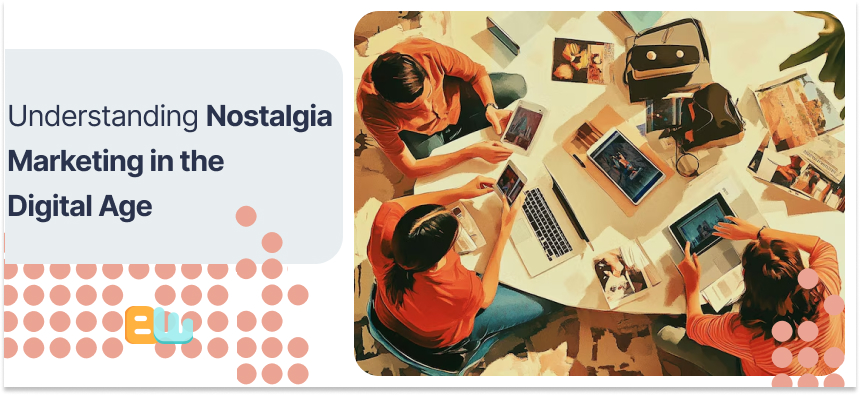
Although nostalgia marketing is not new, its effect has increased due to social media. Brands may create content that connects with consumers who are not interested in traditional marketing anymore and are more attracted to shared memories and experiences.
Why Human Brains Respond Strongly to Nostalgic Content
Nostalgic triggers are hardwired into our brains; when we see something we’ve seen before, our brains release dopamine, the chemical related to pleasure and reward. This neurological reaction immediately establishes a positive association with the stimulus.
According to research published in the Journal of Consumer Research, nostalgia can actually help people feel less anxious and alone, which will increase their openness to your messagewhen things are unclear. One of your most effective marketing tools is this emotional reaction.
The Psychology Behind Emotional Connections to Past Experiences
Brands and customers can form a special emotional bond through nostalgia. People who come across nostalgic content not only recall the item or event, but they also re-establish a connection with their past selves.
Other marketing strategies struggle to recreate the authenticity developed by this emotional trip. You’re promoting reconnection with a significant aspect of your audience’s identity when your brand is linked to treasured memories rather than just a product.
This emotional resonance often leads to:
– Higher trust levels with your brand
– Increased willingness to engage with content
– Greater likelihood of sharing with personal networks
– Enhanced brand recall and positive association
How Social Media Amplifies Nostalgic Marketing Potential
Social media platforms offer the ideal setting for nostalgia marketing to thrive. Platforms like Instagram, Facebook, and TikTok’s visual nature, community element, and shareability make them perfect for the natural virality of nostalgic content.
Nostalgic content is also favored by social media’s algorithm-based content distribution. High-engagement posts with comments like “I remember this!” are promoted in feeds, resulting in a positive feedback loop of exposure and engagement.
5 Ways Nostalgia Marketing Drives Social Media Engagement
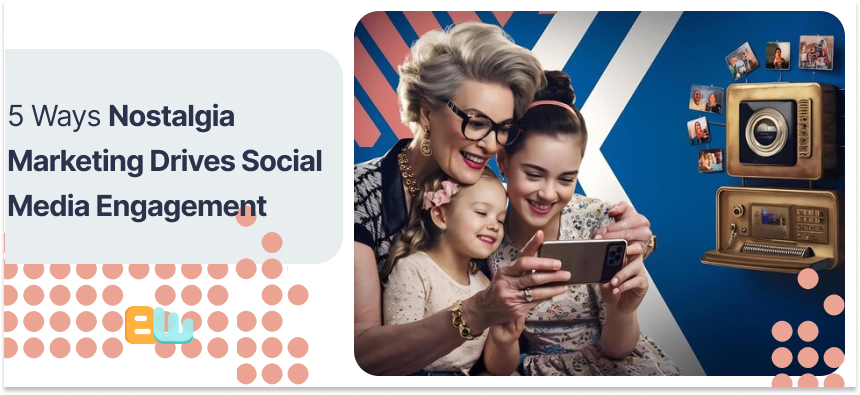
Not only can nostalgia make you feel good, but it also improves your social media metrics. Here are some ways to use it to improve your performance on various platforms.
Creating Shareable Content Through Collective Memories
Creating content that people genuinely want to share is where nostalgia marketing shines. You can create content that feels personally relevant to a significant number of your audience by drawing on a collective memory, such as a shared event, a cultural milestone, or a product that is not in the market anymore.
Coca-Cola expertly uses this tactic by bringing back the old-school bottle designs. Their #ShareACoke campaign frequently incorporates nostalgic elements that prompt thousands of shares as people tag friends who share those memories.
To implement this approach:
1. Identify cultural touchpoints relevant to your target demographic
2. Create side-by-side comparisons of “then vs. now”
3. Ask engagement-focused questions like “Who remembers when…?”
4. Include authentic visual elements from the period referenced
Boosting Comment Sections with “Remember When” Conversations
Few content types generate comment section activity like nostalgia-focused posts. When followers see something that triggers a personal memory, they’re compelled to share their own experience.
Microsoft effectively used this approach when they posted about the evolution of Windows operating systems over the decades. The post generated thousands of comments as users shared stories about their first computer experiences.
To encourage these rich comment conversations:
– Ask specific questions about people’s memories
– Feature “deep cut” references that true fans will appreciate
– Create polls about preferences between past product versions
– Respond to comments with follow-up questions that keep the conversation going
Leveraging Throwback Content for Higher Organic Reach
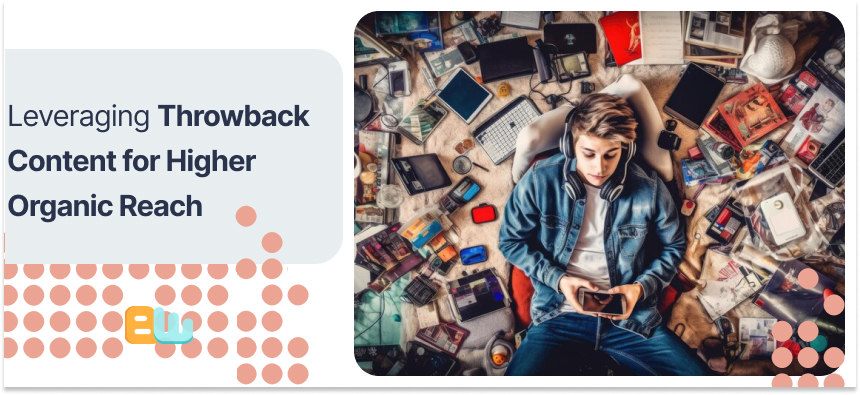
As platform algorithms increasingly limit organic reach, nostalgic content offers a way to break through. Algorithms gives priority to posts that create high interaction signals, such as likes, comments, shares, and viewing time.
An outstanding example of nostalgia marketing that leads to remarkable organic reach is Spotify’s yearly “Wrapped” campaign. They create content that naturally circulates across platforms by presenting consumers’ listening histories in shareable formats.
To improve your organic reach with nostalgia:
– Schedule regular throwback features (#ThrowbackThursday remains effective)
– Resurface your own brand’s history and evolution
– Create then-and-now comparisons of your products, services, or industry
– Highlight customer stories from your early days
Using Nostalgia to Reduce Social Media Ad Fatigue
When consumers don’t pay attention to traditional marketing formats, ad fatigue can become a bigger problem for marketers. By offering something that provokes an emotional reaction rather than a commercial one, nostalgic content breaks through this weariness.
Nintendo expertly uses this tactic in their advertising by showcasing retro gaming consoles and characters. These posts are embraced as pleasent experiences rather than as advertisements.
To combat ad fatigue with nostalgia:
– Incorporate vintage brand elements into your paid social visuals
– Reference cultural moments that align with your brand values
– Use retro filters or effects in video content
– Feature authentic user stories about long-term relationships with your brand
Building Community Through Shared Generational Experiences
The power of nostalgia marketing to turn followers into a real community is its most important feature. People find connections with other users who have similar experiences when they express their responses to nostalgic content.
This strategy is best demonstrated by LEGO, which frequently showcases vintage sets and invites customers to share their LEGO experiences. These posts regularly generate thousands of comments as users discover shared memories with others in the community.
To build community through nostalgia:
– Create private groups for long-term customers or fans
– Develop content series that explore different eras relevant to your audience
– Highlight user-generated content that features vintage versions of your products
– Host live events where community members can share memories
Successful Brands Leveraging Nostalgic Social Campaigns
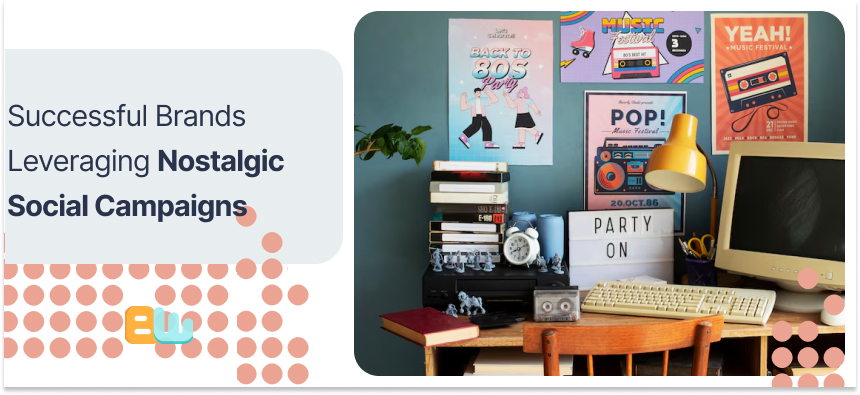
Creating your own nostalgia marketing strategy can be possible by studying effective ones. These companies show off different approaches to successfully integrating nostalgia into social media campaigns.
Case Study: How Netflix Resurrects Beloved Franchises
Netflix has established a big share of its social media presence around nostalgic content. Their relaunch of “Stranger Things” displays the power of nostalgia marketing at its finest — not only reminding the past, but recreating its style in ways that are acceptable to both people who lived through the 1980s and younger audiences curious about the era.
Retro Product Revivals That Generated Viral Moments
Product revivals offer a perfect opportunity for nostalgia marketing on social media. Nokia’s social media promotion for the 2017 reintroduction of their iconic 3310 phone was only centered on nostalgia for the device’s durability, long battery life, and the classic Snake game.
With interaction rates five times greater than their typical product releases, the campaign produced over 500,000 shares across platforms. The campaign was successful because it encouraged audience participation through memory-sharing in addition to selling a phone.
Similar to this, Polaroid’s social strategy for the relaunch of its instant cameras focused on drawing a comparison between the authenticity of physical photography and the perfection of digital images. Younger customers looking for more real relationships found great resonance in authentic experiences.
Music Streaming Platforms’ Throwback Marketing Strategies
Music streaming services have built entire features around nostalgia. Spotify’s “Time Capsule” playlists and Apple Music’s “Replay” features are designed to trigger nostalgia for users’ own listening histories.
These personalized nostalgia experiences generate massive social sharing as users compare their music journeys. Spotify reports that their nostalgic features generate 3x the social shares of their new music promotions.
The strategy works because it transforms a digital experience into an emotional journey, reminding users of specific periods in their lives through the soundtrack that accompanied them.
Fashion Brands Bringing Back Vintage Trends Successfully
Using nostalgia marketing on visual platforms such as Instagram has been very effective for fashion brands. More than 26 million Instagram posts with the hashtags #superstar and #stansmith were created by Adidas’ for their iconic Superstar and Stan Smith collections.
What made these commercials powerful was how they connected previous generations of wearers with new consumers. The brand developed a through-line that was pleasant to several demographic groups at once by combining both historical photos and modern influencers.
Creating Your Effective Nostalgia Marketing Strategy
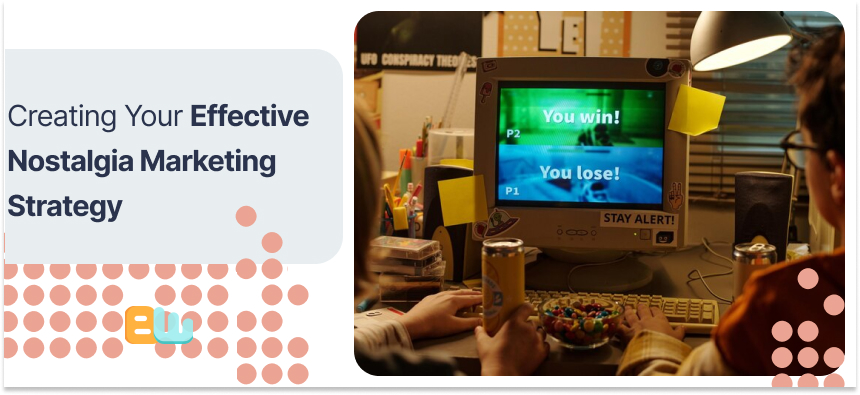
Now that you understand why nostalgia marketing works and have seen effective examples, let’s establish a foundation for creating your own plan.
Identifying Your Audience’s Most Powerful Memory Triggers
Effective nostalgia marketing begins with identifying which past events resonate most strongly with your unique audience groups. By age group, region, and cultural background, the result can differ significantly.
Start by developing nostalgia profiles for your key audience segments:
1. Identify age ranges within your audience
2. Research defining cultural moments during their formative years (ages 10-25)
3. Survey existing customers about brands, products, and experiences they miss
4. Monitor social conversations to identify which nostalgic topics generate engagement
Make a nostalgia calendar to remember the anniversaries of important cultural events that your target audience may find interesting.
7 Content Formats Perfect for Nostalgic Social Campaigns
Certain content formats are particularly effective for nostalgia marketing. Here are seven proven approaches:
1. Evolution timelines: Show how your product, service, or industry has changed over the decades.
2. Then-and-now comparisons: Juxtapose images of the same location, product, or cultural practice from different eras.
3. Retro redesigns: Temporarily update your logo, packaging, or website with a vintage look from a specific decade.
4. Historical milestone celebrations: Commemorate anniversaries of your company or product with archive footage and customer stories.
5. “On this day” features: Highlight what was happening within your brand or industry on this date in previous decades.
6. Revived mascots or characters: Bring back retired brand characters for special campaigns or limited appearances.
7. Period-specific challenges: Create social media challenges based on activities or trends from previous decades.
Balancing Authentic Nostalgia with Contemporary Brand Voice
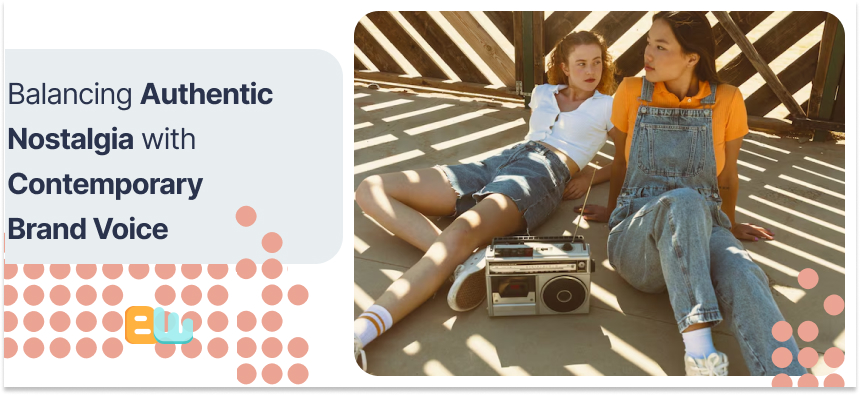
One of the major obstacles in nostalgia marketing is keeping your brand’s identity while recalling the past. Your content should feel nostalgic without being outdated or out of touch.
To strike this balance:
– Reference the past but frame it through your current brand perspective
– Use nostalgic visual elements while maintaining your modern color palette and typography
– Pair vintage imagery with contemporary language
– Connect past experiences to present solutions your brand provides
Old Spice masterfully navigates this balance by referencing their heritage while maintaining their modern, humorous brand voice. Their “Men of Experience” campaign acknowledged the brand’s long history while keeping the irreverent tone that defines their current identity.
Avoiding Common Pitfalls in Nostalgic Marketing Approaches
While nostalgia marketing is powerful, several common mistakes can undermine its effectiveness:
Inauthentic references: Research thoroughly before referencing a past era. Inaccuracies will be quickly called out by those who lived through the period.
Assuming universal experiences: What’s nostalgic for one demographic may be meaningless to another. Segment your nostalgic content to ensure relevance.
Overreliance on nostalgia: Your social strategy should include a mix of forward-looking and nostalgic content. Brands that only look backward can seem stuck in the past.
Insensitivity to historical issues: Some aspects of past decades involve sensitive social issues. Be careful not to romanticize problematic aspects of history.
Copyright concerns: Using cultural references often involves intellectual property considerations. Ensure you have rights to reference specific shows, characters, or music.
Measuring the ROI of Nostalgia-Based Social Campaigns
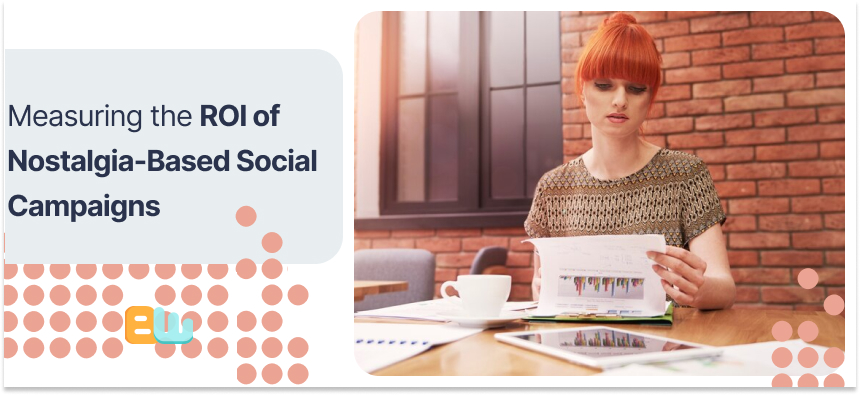
Like any marketing approach, nostalgia campaigns should be measured for effectiveness. But traditional metrics may not capture their full impact.
Key Performance Indicators for Nostalgic Content Success
When evaluating nostalgic content, consider these specialized KPIs:
– Emotional response metrics: Use sentiment analysis tools to measure the emotional tone of comments and shares
– Memory sharing rate: The percentage of engagements that include personal memory stories
– Cross-generational engagement: Measure whether your content engages multiple age demographics
– Conversation duration: Track how long discussion continues after posting nostalgic content
– Brand perception shifts: Survey audience before and after campaigns to measure changes in perceived brand authenticity and relatability
These metrics should supplement standard engagement metrics like reach, shares, and conversion rates.
Tracking Emotional Engagement vs Traditional Metrics
The depth of connection dissolved in the nostalgic content is sometimes not captured by traditional engagement metrics. Product announcements may get more attention right away, but nostalgic content usually creates long-term brand love.
Develop a balanced scorecard that weighs both immediate performance metrics and longer-term brand relationship indicators:
– Immediate metrics: clicks, shares, reach
– Intermediate metrics: comment depth, return visits, follow-up engagement
– Long-term metrics: brand sentiment change, community growth, earned media
This balanced approach prevents undervaluing content that builds strong relationships but may not drive immediate conversions.
How to Attribute Conversions to Nostalgic Marketing Efforts
Attribution remains challenging for content focused on emotional connection rather than direct response. Implement these approaches to better track nostalgia marketing’s contribution to conversions:
1. Create unique landing pages for nostalgic campaigns to track direct traffic
2. Develop special offer codes that reference the nostalgic theme
3. Implement post-purchase surveys asking which content influenced the decision
4. Compare conversion rates among users exposed to nostalgic content versus those who weren’t
5. Track time lag between engagement with nostalgic content and conversion events
These approaches provide a more complete picture of how nostalgia marketing contributes to your conversion funnel.
Future Trends: Where Is Nostalgia Marketing Heading?
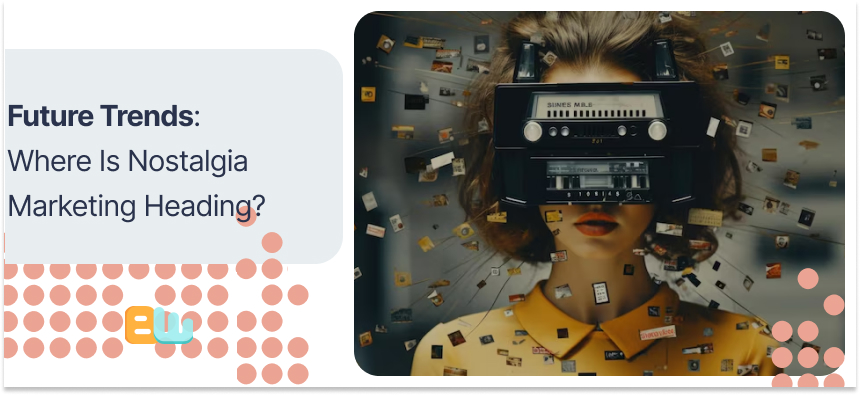
Nostalgia is constantly changing, much like any marketing strategy. Being aware of new trends can help you keep the effectiveness and freshness of your approach.
How Gen Z Is Redefining Digital Nostalgia Marketing
The newest consumer generation is developing its own relationship with nostalgia. Gen Z experiences “early-onset nostalgia” – feeling nostalgic for periods they’ve only recently experienced or even periods they didn’t experience firsthand.
This generation is nostalgic for:
– Early 2000s fashion and culture they experienced as children
– 1990s aesthetics they know primarily through digital archives
– Pre-social media internet experiences
– Early social platforms like Vine and pre-algorithm Instagram
Brands aiming to grab Generation Z’s attention should understand that their nostalgia triggers are usually digital experiences rather than physical products, and they often make references to eras they are familiar with through media rather than personal experiences.
AR and VR Technologies Creating Immersive Nostalgic Experiences
Advanced technologies are transforming how brands can deliver nostalgic experiences.
Successful examples include:
– Pokemon GO’s combination of 90s characters with AR technology
– Walmart’s virtual toy museum that lets users “walk through” decades of Christmas toy trends
– Miller Lite’s “Cantroller” campaign that merged 80s gaming with contemporary beer marketing
Conclusion: Implementing Nostalgia in Your Social Strategy
Standard promotional content just cannot reach the emotional connection that nostalgia marketing provides to people. You can create content that feels personally relevant and engaging by drawing on common memories and experiences.
Start by finding the nostalgia triggers most relevant to your audience. Make sure you keep your brand voice while using different nostalgic formats in your content calendar.
Remember that successful nostalgia marketing is more than just making references to the past; it’s also about reconnecting your pleasant experiences to your brand’s present goals and products.
To get the most out of your nostalgia advertising, analyze your achievements using both conventional analytics and emotional engagement metrics.
The most successful nostalgia marketing doesn’t just remind people of who they were — it ties that previous self to who they are today, with your brand performing as the bridge between those experiences.
What nostalgic feature may you use in your next social campaign? The memories are just waiting to be remembered.
#nostalgia #socialmediamarketing
